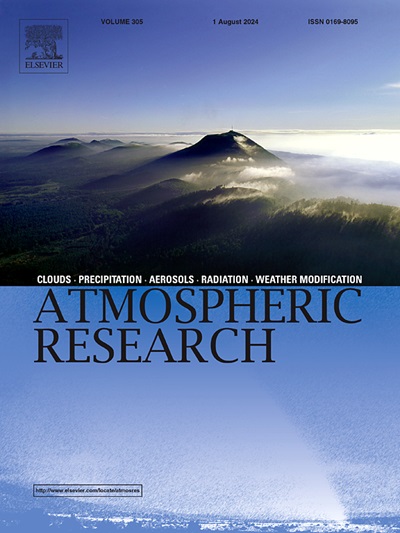Towards understanding the extreme flood–drought abrupt alternation over Southeast China in late summer 2019
IF 4.5
2区 地球科学
Q1 METEOROLOGY & ATMOSPHERIC SCIENCES
引用次数: 0
Abstract
The abrupt alternation between floods and droughts can have catastrophic impacts on local communities. In 2019, Southeast China experiences an extreme flood-drought abrupt alternation (FDAA), characterized by record-breaking flood in July and extreme drought in August. This study investigates the atmospheric circulations driving this FDAA and identifies the key mechanisms involved. Both the flood in July and the drought in August are closely associated with cyclonic circulation anomalies, but with distinct locations and dynamics. In July, a cyclonic anomaly over the East China Sea causes moisture convergence and ascending motions, leading to heavy rainfall. In contrast, two cyclonic anomalies in August—one over Northeast China and the other over the Western North Pacific (WNP)—induce northerly winds, moisture divergence, and descending motions, resulting in rainfall deficits. The July cyclonic anomaly is linked to positive soil moisture anomalies over Eastern Europe, which, through cooling surface air temperature, triggers eastward-propagating wave trains that induce cyclonic anomalies over the East China Sea. The August anomalies, on the other hand, are connected to North Atlantic and tropical Indian/Pacific SST anomalies. North Atlantic SST anomalies induce the anomalous Northeast China cyclone through modifying overlying atmosphere and triggering eastward-propagating wave trains. Significant positive IOD and warm SST anomalies over the central Pacific collaboratively trigger cyclonic circulation anomalies over the WNP through modifying the Walker circulation and the Hadley circulation. Our findings highlight the importance of understanding intraseasonal changes in tropical and midlatitude forcings to improve predictions and mitigate the impacts of compound climate disasters.
求助全文
约1分钟内获得全文
求助全文
来源期刊

Atmospheric Research
地学-气象与大气科学
CiteScore
9.40
自引率
10.90%
发文量
460
审稿时长
47 days
期刊介绍:
The journal publishes scientific papers (research papers, review articles, letters and notes) dealing with the part of the atmosphere where meteorological events occur. Attention is given to all processes extending from the earth surface to the tropopause, but special emphasis continues to be devoted to the physics of clouds, mesoscale meteorology and air pollution, i.e. atmospheric aerosols; microphysical processes; cloud dynamics and thermodynamics; numerical simulation, climatology, climate change and weather modification.
 求助内容:
求助内容: 应助结果提醒方式:
应助结果提醒方式:


